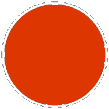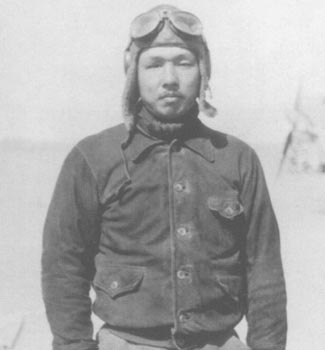Japan

Lieutenant Colonel Mitsugu Sawada
Japan

Lieutenant Colonel Mitsugu Sawada

26 March 1911 – 5 March 1943
Sawada was born on 26 March 1911 in Ishikawa Prefecture.
He passed out of the Army Military Academy with the 48th graduation in 1932, then joining the 44th Flying Cadet entry to become a pilot.
After fighter training, he joined the 4th Rentai at Tachiarai.
In July 1935, he completed a course in fighter instruction at Akeno, remaining there in this role, where his spirit and skill ensured that he became regarded as an excellent instructor.
He would tell his pupils that he was the top fighter pilot in Japan, and therefore in the world!
During this he had to make a record 13 force-landings, becoming known as the ‘King of the Force-Landing’.
Tall for a Japanese at 175.5cm, he achieved 2nd grade in Kendo.
When the China Incident broke out in July 1937 he was posted to the 2nd Daitai’s 1st chutai in northern China.
On 6 October, the 2nd Daitai gained it first success when three Ki-10s led by First Lieutenant Sawada engaged three Curtiss Shrikes of the 12th RS just before they were about to land at Baoding. Splitting up, they cornered one of them and Sawada shot it down.
During the afternoon 25 October 1937, First Lieutenant Kosuke Kawahara’s flight from the 1st chutai of the 2nd Daitai (Ki-10s) flew as escort to First Lieutenant Sawada, who flew as a courier to Tsu-Chang with an unarmed aircraft. Over the front-line they met a Chinese Vought Corsair biplane, which was shot down by Kawahara.
In the evening, Sawada returned from Tsu-Chang and again they met a Corsair over the front-line, which was jointly shot down by Kawahara and Sergeant Major Hiroshi Sekiguchi.
Of the three Vought Corsairs of the 7th RG sent on a reconnaissance mission to Anyang, only one returned at 18:00. The other two (nos. 602 and 1205) were lost together with the four crew; Wang Kan and Han Shih-Yu and Ting Chia-Hsien and Wang Wen-Hsiu.
At 12:00 on 11 November, the Luoyang airfield was bombed by the 2nd and 8th Daitais. One Vought V-65 Corsair was claimed during the attack, this one being claimed by 2nd Daitai’s First Lieutenant Sawada.
It seems that they escorted Army Ki-21 bombers (Type 97 – heavy bomber), which attacked Luoyang airfield during the day, claiming several enemy aircraft damaged on the ground.
Vought Corsair no. 605 piloted by Cheung I-Min was shot down when it was attempting to take off and Cheung was killed. The airfield was cratered but otherwise there was no loss.
The 1st chutai of the 2nd Daitai (Ki-10s) took part in the first combat over Luoyang on 30 January 1938 when eight of the unit’s fighters escorted 6th Daitai bombers over Luoyang. The fighters were engaged in combat with I-15bis and returned claiming 13 shot down for the loss of Sergeant Toshio Kawai (Sho-1), who was shot down and killed. Tateo Kato claimed two victories while First Lieutenant Kosuke Kawahara, who led the third element of the 1st chutai fought for 15 minutes against intercepting I-15bis, claiming three shot down. First Lieutenant Sawada claimed an additional three victories.
On 25 March 1938 the 1st chutai of the 2nd Daitai (Ki-10s), commanded by Captain Tateo Kato fought with Chinese I-152s over Guide. Although outnumbered 5 to 18 the Japanese pilots took a heavy tool of the Chinese aircraft. Captain Kato shot down four I-152s, Flight Sergeant Tanaka shot down two and Sergeant Major Hiroshi Sekiguchi shot down one.
First Lieutenant Kosuke Kawahara (leading the second element) was seen to shoot down two and pursue a third to the ground, when his aircraft was hit from behind and burst into flames. He waved to his wingman, Sekiguchi, before diving into the ground. First Lieutenant Sawada shared in the destruction of a large aircraft. Also in this combat was Tanaka forced to make an emergency landing and Sekiguchi was badly wounded in the thigh but managed to land and being transported to hospital.
The 2nd chutai of the 2nd Daitai also took part in this combat claiming 9 more victories, one of these being claimed by Yonesuke Fukuyama. Totally the 2nd Daitai’s 16 fighters claimed 19 victories for the loss of Kawahara.
According to Chinese records it seems that at least the 3rd PG took part in this combat. They lost six I-15bis and got three pilots killed when they where attacked by 19 Kawasaki Type 95 (Ki-10) biplane fighters of the 2nd Daitai near Kwei-teh airfield (Koi-toh in Japanese).
On return Kato could not believe that such a brilliant pilot as First Lieutenant Kawahara had been lost, and waited at the airfield until sunset in the hope of his late return. Next day as a sign of mourning, he shaved off a much beloved moustache.
On 20 May, 24 Ki-27s from the 2nd Daitai clashed with Chinese fighters over Lanfeng. Captain Sawada of the 1st chutai claimed three I-15s. A fourth I-15 was claimed by Katsumi Anma in his first combat when he was flying as the third pilot in Sawada’s element. Iori Sakai of the 2nd chutai claimed another victory. Totally, the 2nd Daitai claimed 12 victories over Lanfeng for no losses.
When Captain Tateo Kato returned to Japan in May 1938 he was given command of the chutai.
The Ki-27 of Captain Sawada, 1st chutai of the 2nd Daitai, was damaged during air combat on 8 June.
The 2nd Daitai became the 64th Sentai in August 1938.
He led the 1st chutai until March 1939 before returning to Japan to resume his instructor duties at Akeno.
In 1941, he was sent to Germany, but returned when the invasion of the Soviet Union began, and was posted to the 85th Sentai as executive officer (March 1941 – February 1943).
In March 1943, Major Sawada took command of the 1st Sentai, arriving in New Guinea and taking this unit to Lae for convoy escort duties.
On 1 March 1943, Sawada claimed a B-17 while escorting a convoy.
On 5 March, he took off on his own from Lae, bound for Rabaul in his Ki-43, but found that the undercarriage would not retract. Instead of returning to base, he pressed on for home.
He was intercepted by a number of P-40s and P-38s, fighting these for 30 minutes during which time watchers on the ground reported seeing him shoot down three of his assailants. Overcome by numbers, his aircraft was finally hit and burst into flames, diving down to crash in the jungle.
At the time of his death Sawada was credited with 5 biplane victories and a total of 12.
Comparing his total with the official credit, it seems that one of these 12 should probably be considered as a shared.
Claims:
| Kill no. | Date | Time | Number | Type | Result | Plane type | Serial no. | Locality | Unit |
| 1937 | |||||||||
| 1 | 06/10/37 | 1 | Curtiss Shrike (a) | Destroyed | Ki-10 | Baoding | 2nd Daitai | ||
| 2 | 11/11/37 | 12:00 | 1 | Corsair (b) | Destroyed | Ki-10 | Luoyang | 2nd Daitai | |
| 1938 | |||||||||
| 3 | 30/01/38 | 1 | Enemy aircraft | Destroyed | Ki-10 | Luoyang area | 2nd Daitai | ||
| 4 | 30/01/38 | 1 | Enemy aircraft | Destroyed | Ki-10 | Luoyang area | 2nd Daitai | ||
| 5 | 30/01/38 | 1 | Enemy aircraft | Destroyed | Ki-10 | Luoyang area | 2nd Daitai | ||
| 25/03/38 | 1 | Enemy aircraft | Shared destroyed | Ki-10 | Guide | 2nd Daitai | |||
| 6 | 20/05/38 | 1 | I-15 (c) | Destroyed | Ki-27 | Lanfeng | 2nd Daitai | ||
| 7 | 20/05/38 | 1 | I-15 (c) | Destroyed | Ki-27 | Lanfeng | 2nd Daitai | ||
| 8 | 20/05/38 | 1 | I-15 (c) | Destroyed | Ki-27 | Lanfeng | 2nd Daitai | ||
| 1943 | |||||||||
| 9 | 01/03/43 | 1 | B-17 | Destroyed | Ki-43 | Lae area | 1st Sentai | ||
| 10 | 05/03/43 | 1 | American fighter | Destroyed | Ki-43 | Lae area | 1st Sentai | ||
| 11 | 05/03/43 | 1 | American fighter | Destroyed | Ki-43 | Lae area | 1st Sentai | ||
| 12 | 05/03/43 | 1 | American fighter | Destroyed | Ki-43 | Lae area | 1st Sentai |
Biplane victories: 5 and 1 shared destroyed.
TOTAL: 12 and 1 shared destroyed.
(a) Curtiss Shrike of the 12th RS.
(b) Vought V-65 Corsair no. 605 piloted by Cheung I-Min shot down and pilot KIA.
(c) Probably I-15bis.
Sources:
Air Operations in the China Area (July 1937-August 1945)- Military History Section Headquarters, Army Forces Far East, Historica Aviation Publications
Japanese Army Air Force Aces 1937-45 - Henry Sakaida, 1997 Osprey Publishing, London, ISBN 1-85532-529-2
Japanese Army Air Force fighter units and their aces 1931-1945 - Ikuhiko Hata, Yasuho Izawa and Christopher Shores, 2002 Grub Street, London, ISBN 1-902304-89-6
Ki-27 'Nate' Aces – Nicholas Millman, 2013 Osprey Publishing, Oxford, ISBN 978-1-84908-662-2
Ki-43 'Oscar' Aces of World War 2 - Hiroshi Ichimura, 2009 Osprey Publishing Limited, Oxford, ISBN 978-1-84603-408-4
Soviet Fighters in the sky of China, Part II - Anatolii Demin, 2000 Aviatsiia Kosmonavtika 10 (translated by George M. Mellinger)
Additional information kindly provided by Edward Chan.


